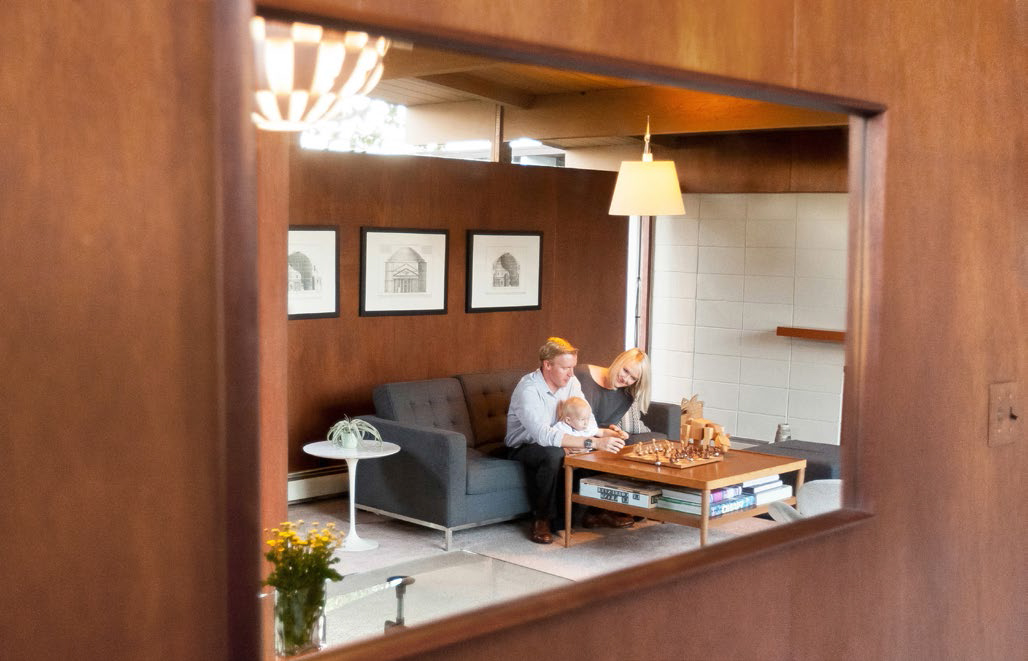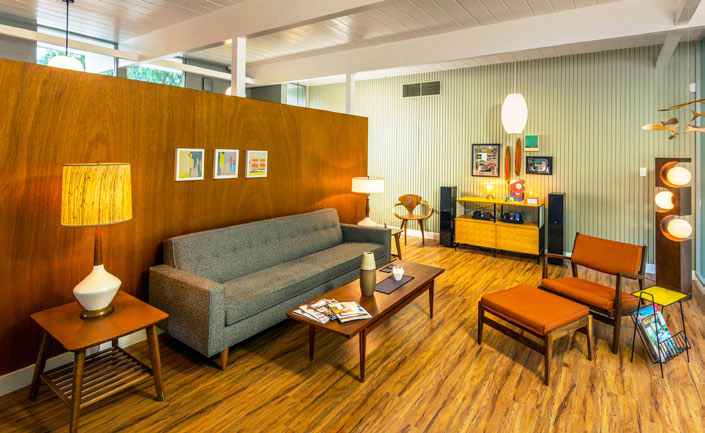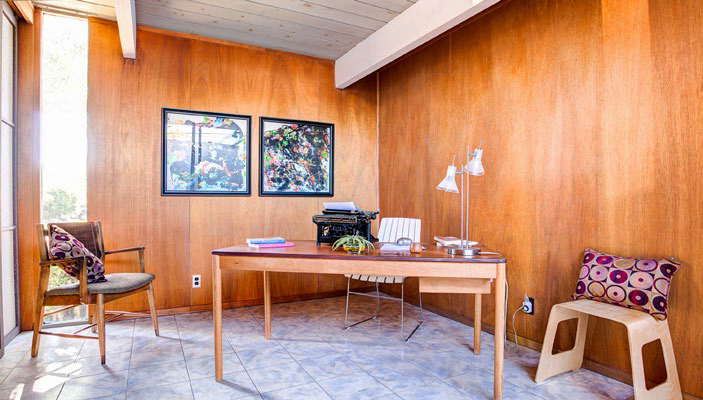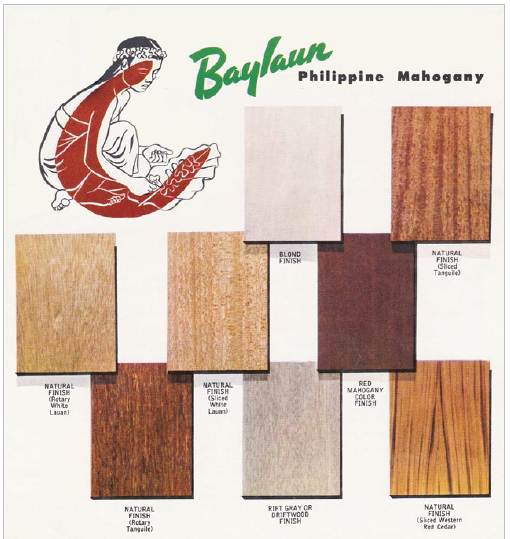Lauan's Lost Love - Page 4
 |
|
|
 |
 |
|
|
 |
|
|
Impossible to get during the war, by 1949 Philippine mahogany was back on the market. 'Mahogany supply good, says Philippine official,' was the September 14, 1949 headline in the Los Angeles Times.
Soon Philippine mahogany—it actually came from several Southern Asia countries, including Malaysia and Indonesia—was flooding the American market, often sold in sheets four by eight feet in dimensions.
Baylaun Philippine Mahogany advertised that it came "from tropical Basilan Island…in the Sulu Sea," with wood "beautiful and exotic—yet moderate in cost!"
The plywood came in a variety of tones. "A beautiful blonde joins a famous family," one Weldwood Plywood ad in the early 1950s bragged about their latest offering. "She has a warm, honey-colored complexion, and a beautiful figure."
While many modern custom homes from the mid-century days were sheathed in solid wood planks, their designers used plywood as well. Even Frank Lloyd Wright used Philippine mahogany sheets, including for a house he designed for his son in Bethesda, Maryland.
Both William Wurster and Gardner Dailey, two of the Bay Area's earliest modern architects, used plywood sheathing, at least from the mid-1930s, in their homes, sometimes faced with redwood.
By the early 1950s plywood was the material of choice for Bay Area modernists for their more economical houses. Roger Lee used Philippine mahogany extensively. Richard Neutra used the panels for a small home he designed in Berkeley.
One can't understand the appeal of Philippine mahogany panels to architects of this generation without thinking about texture. It was one among several materials and structural-decorative devices that produced a rich ensemble, both inside and outside the house.
Nowhere can this be seen better than in the work of Bay Area architect Henry Hill, whose homes, no matter how small, were always texturally and colorfully varied, with grass-cloth walls; often tinted beams, slats, and screens to vary the light and create shadows; the occasional panel of gold leaf; obscure and tinted panels of glass; and wooden walls either of planks or plywood.
Philippine panels appealed as well to some Southern California modernists, whose work is generally seen as cooler and less rustic than homes by their compatriots up north. Craig Ellwood, for example, went for Philippine mahogany plywood walls in at least two of his steel-framed houses of the 1950s.
To many of these architects, who valued simplicity, plywood could provide something that the use of hardwood planks could not—it was about as basic and unpretentious a material as one could find.
For his earliest tract homes, Eichler often used redwood plywood, his son, the late Ned Eichler, recalled in a 2005 interview. But it proved to be too soft, Ned said. "Kids would damage it." It was also too dark. "It absorbed the light too much."




